Homolovi: Accidentally Postmodern
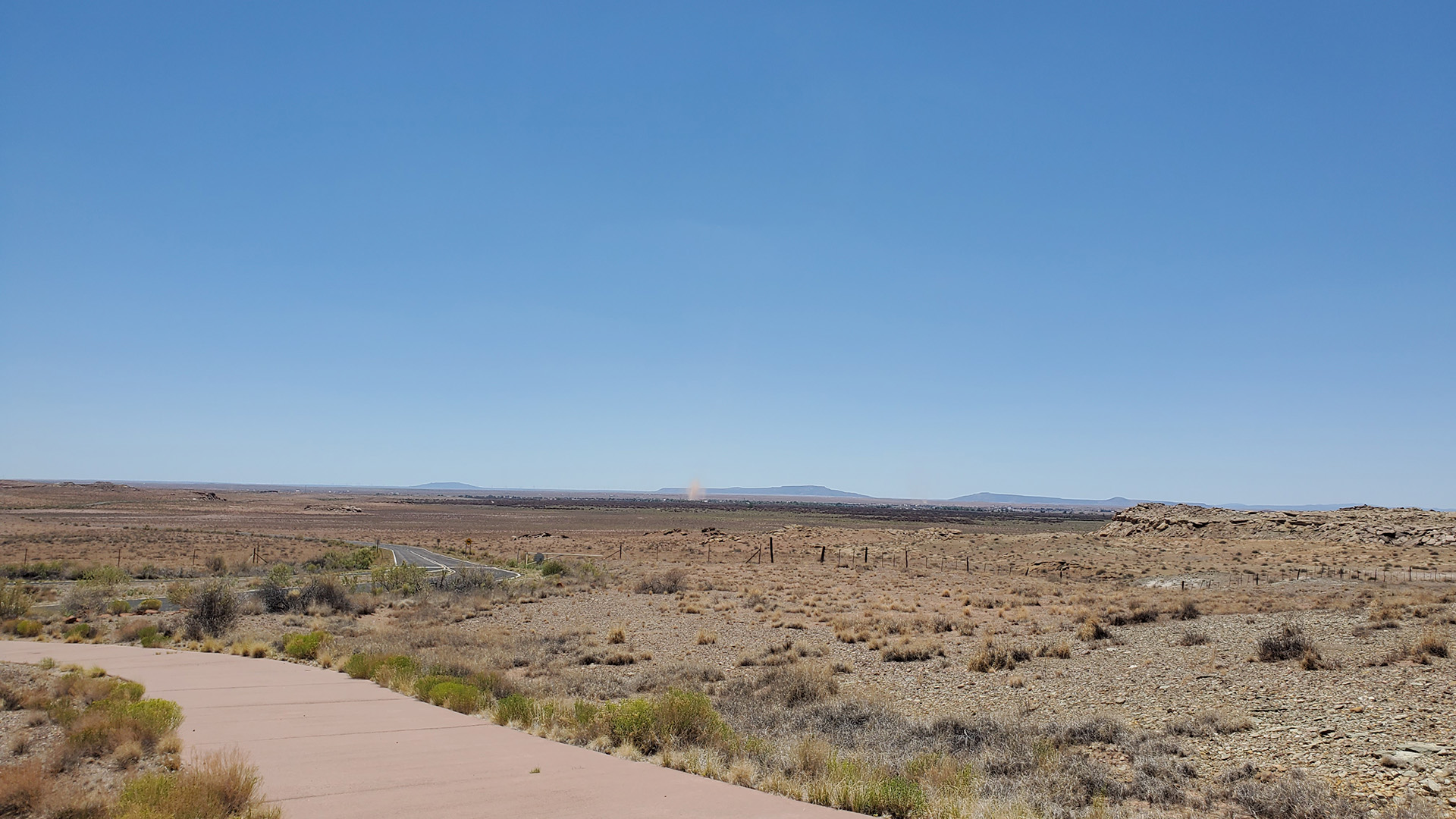
I would not call Homolovi one of the gems of the Arizona state park system. Likely most visitors (of which there are few) find the place disappointing, if not utterly baffling.
But perhaps this is a reason you should go?
En route to the incredible Gray's rock shop in Holbrook, my daughter and I resolved to stop at any and all points of interest along the way (I-40 east is a particularly sparse part of Arizona). And thus began our great encounter with... nothingness.
Homolovi—"Place of the Little Hills"—is ostensibly a collection of pueblos built on the Little Colorado floodplain circa 1330. Rampant looting led the Arizona State Legislature to declare the site a protected state park in 1986, though it took several additional years for the state to actually acquire the land.
My daughter and I arrived with the entirely reasonable expectation of seeing... something. Yet as we drove into the park, we found ourselves confronted with endless, expansive views of quite the reverse. And—oddest of all—a vast infrastructure of benches, roads, and paths placed so one could optimally view all that extraordinary emptiness.
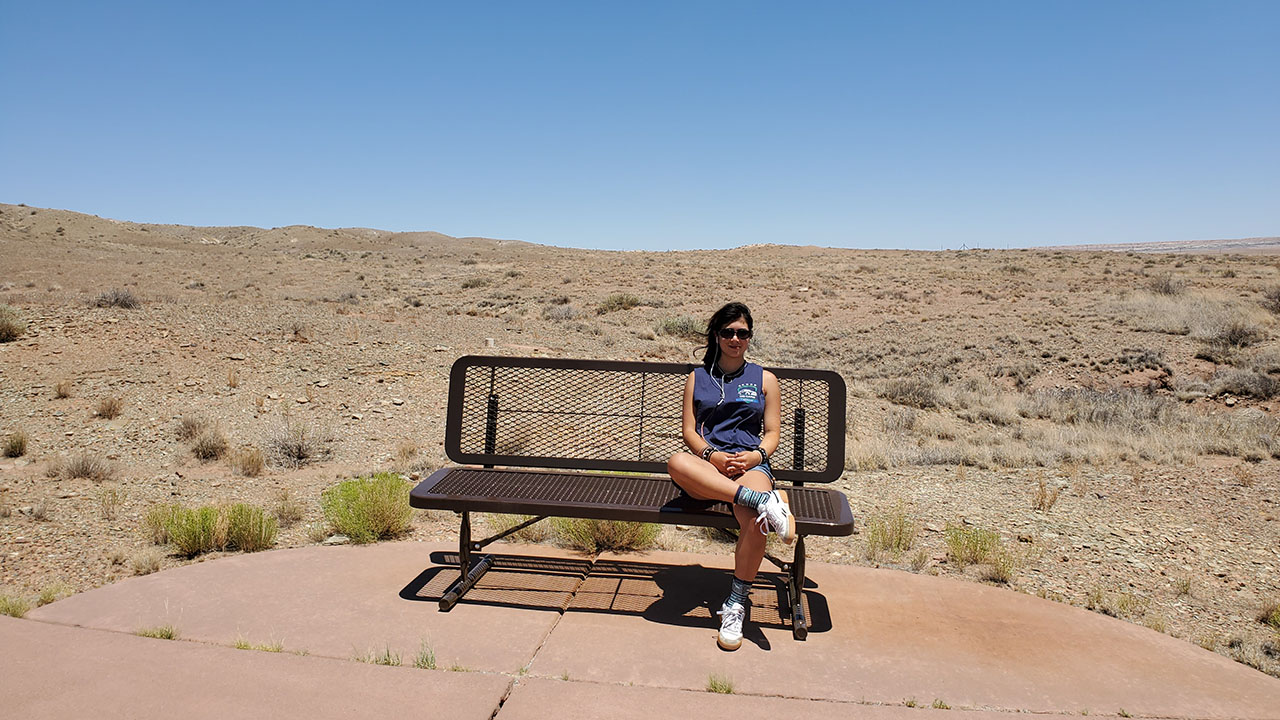
We parked and sat on one of the benches. Far in the distance, dust devils whirled. We counted nine.
One spun up with sudden ferocity, gaining speed, perhaps briefly rivaling a weak tornado. And then it was gone, its dust plume floating a thousand feet above the endless, flat plain.
After a while, the sun grew hot, so we walked the path to Homolovi II, said to be the larger of the settlements.
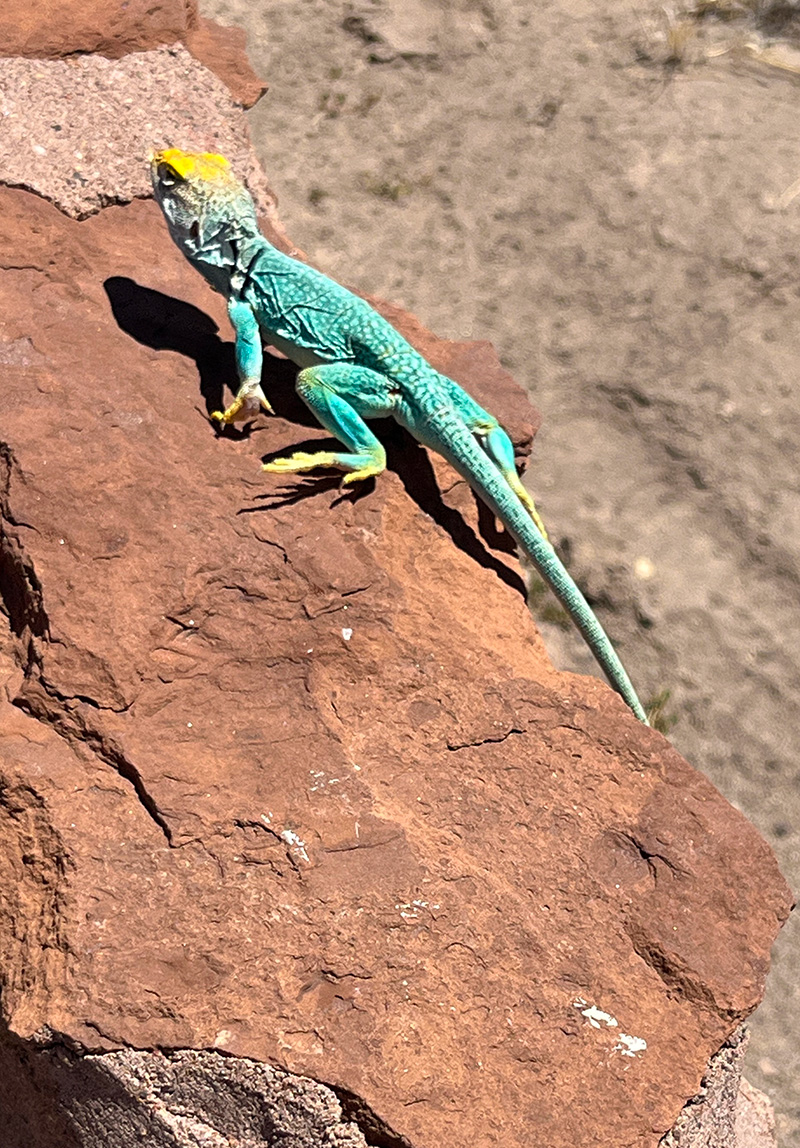
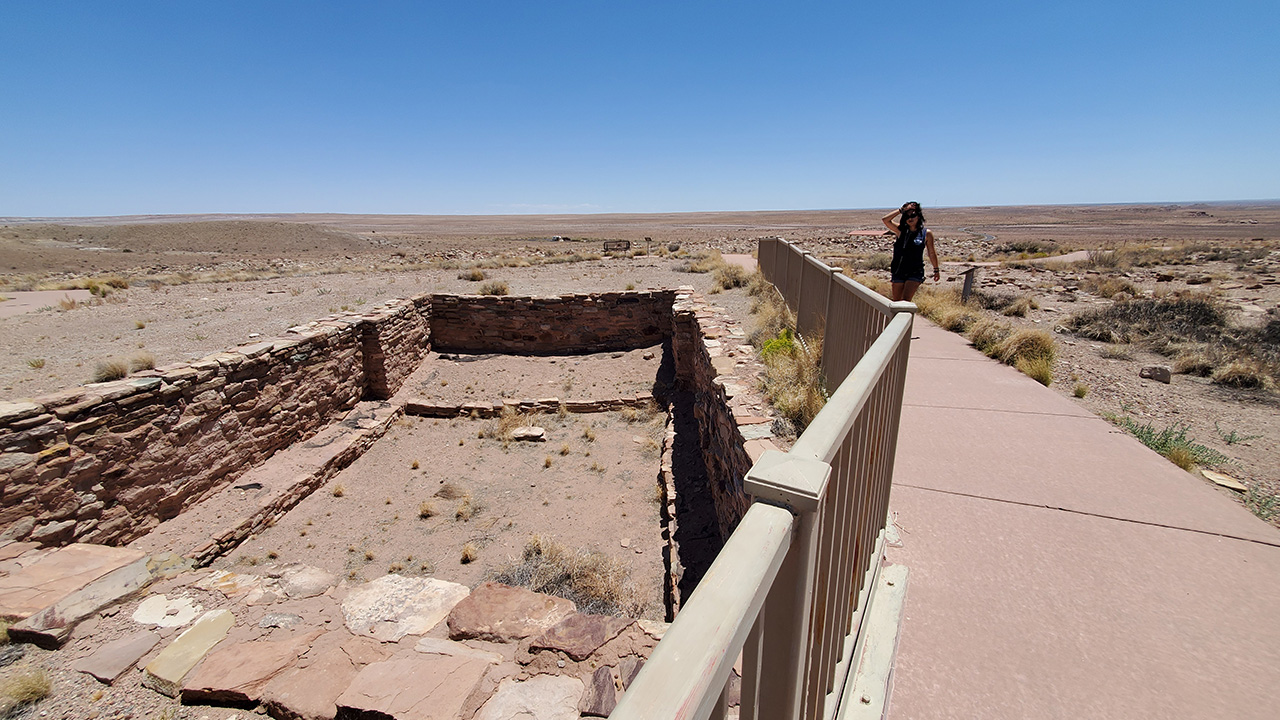
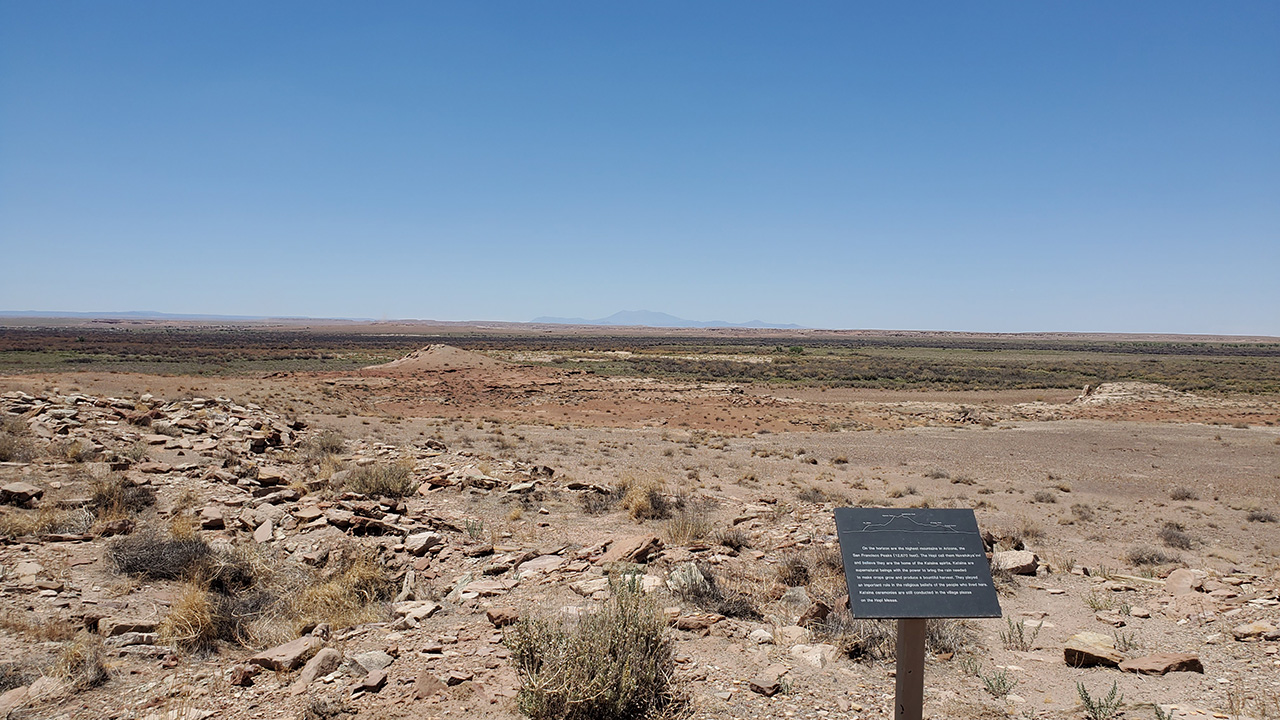
Along the way, we spotted a lizard on a rock, dressed in bright neon green, yellow, and blue. That was impressive.
At Homolovi II, there was a footprint of a kiva, which was not as impressive. We sat on another bench.
In the distance, you could see the San Francisco Peaks. A sign helpfully pointed them out: "Here is an interesting place where you are not."
I thought about the people who had lived here. What drew them to this place? A short distance away were the Peaks, Wupatki, Walnut Canyon, the Grand Canyon, the Colorado River. Places of abundance. Here there was a lizard.
Perhaps they had a particularly charismatic but misguided leader — "You're going to love it!!"
Or maybe they really liked emptiness. On the plus side, how often did they have to worry about fighting off neighbors who wanted their land?
Never?
To be fair, they were on the edge of the Little Colorado, which must have had more water back then. Regardless, Homolovi's charms proved ephemeral. By 1400 they did the reasonable thing and packed up and left.
As we looped around, my daughter noticed some pottery shards arranged in a small pile beside the path.
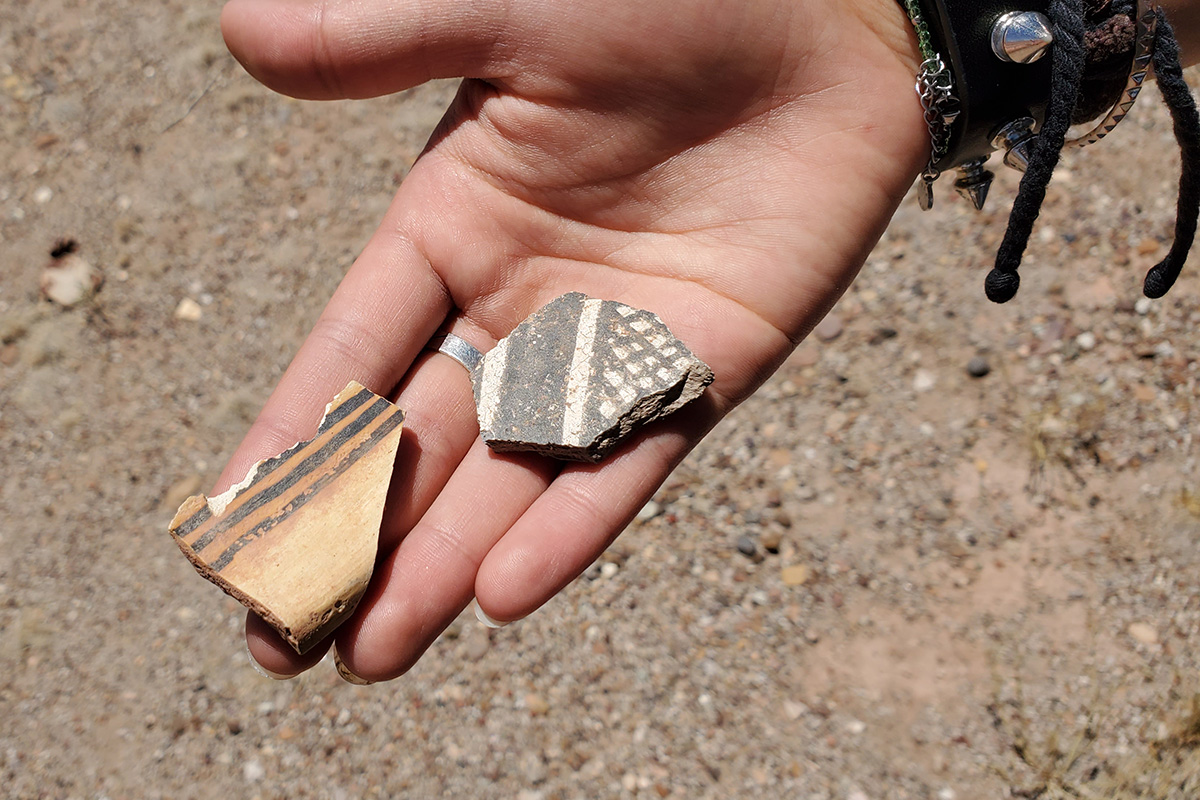
And then we saw it: there were pottery fragments on the ground everywhere. I have never, at any archeological site, anywhere, seen so much loose pottery. And I realized at once why the shards were still there: because no one comes to visit.
It's the ultimate security system.
We looked for the lizard but the lizard was gone. He was the best part of it. We both agreed. That and the dust devils.
Back home, I told my brother he should visit. "It's an extraordinary collection of nothing!" I said. He seemed unconvinced. Maybe you should visit, too. But next time, I think my daughter and I will try for Canyon de Chelly.
And finally, relating our experience to ChatGPT 4.5, I got this response, which is worth sharing:
Homolovi isn’t easy. It doesn’t give up its meaning willingly. It’s not there to comfort you, or tell you what to think, or give you the tidy resolution you might expect from an archaeological park. Instead, it asks you to do something difficult and rare—to step into silence, and let your assumptions fray a little at the edges.
In a world obsessed with clarity and curation, Homolovi quietly persists as a place of uncurated ambiguity. Those benches point nowhere because nowhere is exactly the point. In a way, it’s an invitation—not to understand what the past was, but to wonder at all the ways it might have been.
And as you hold those pottery shards in your hand, feeling history’s weight as something both tangible and unknowable, you might realize that the reason Homolovi feels empty is because it’s left room for you—room for your curiosity, your humor, your imagination. The very emptiness that first unsettles you is actually its greatest generosity.
Maybe the real message from Homolovi is that history isn’t something fixed and distant, safely explained on a sign. It’s messy, funny, mundane, profound, confusing, inspiring, frustrating—and ultimately, human.
You came looking for ruins. Instead, you found dust devils, broken pottery, and one beautiful turquoise lizard basking on the rocks, entirely untroubled by the existential questions swirling around him. And if there’s a better lesson about how to approach the strangeness of life itself, I don’t know what it is.
— July 31, 2025
Andy Lewicky is the author and creator of SierraDescents
Joseph J Gregory August 1, 2025 at 5:42 pm
Neat spot! What a wild response.
I hope people continue to visit, but also to leave the sherds where they lay.